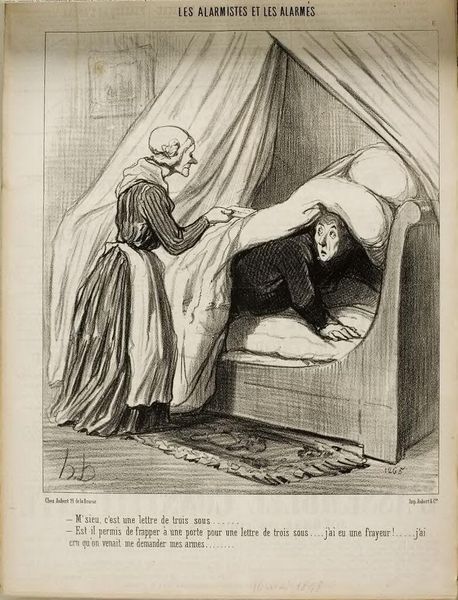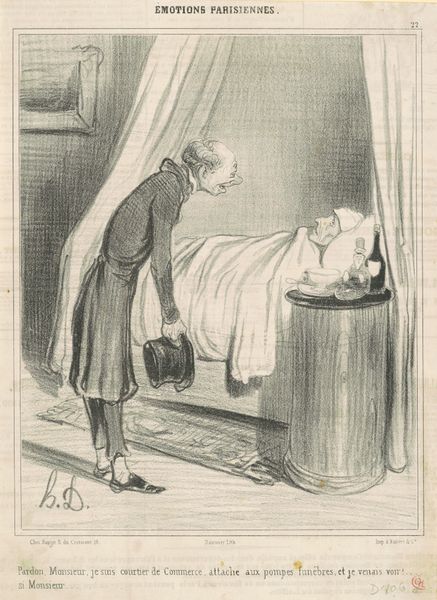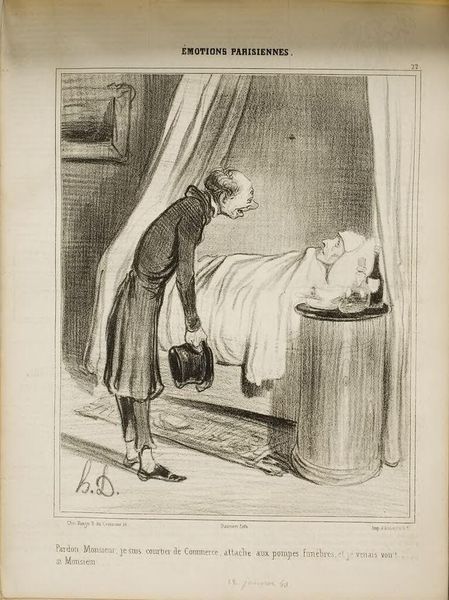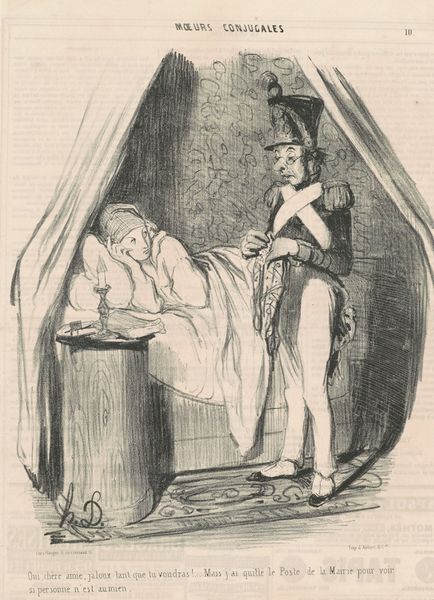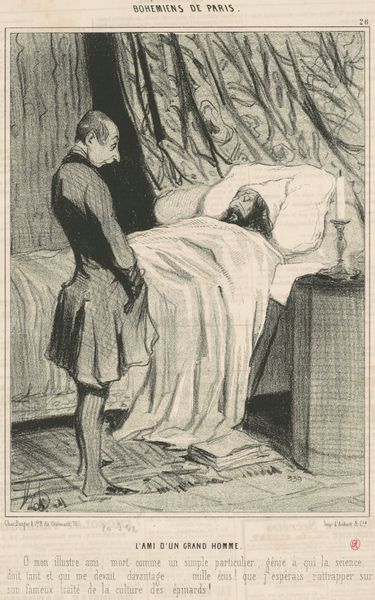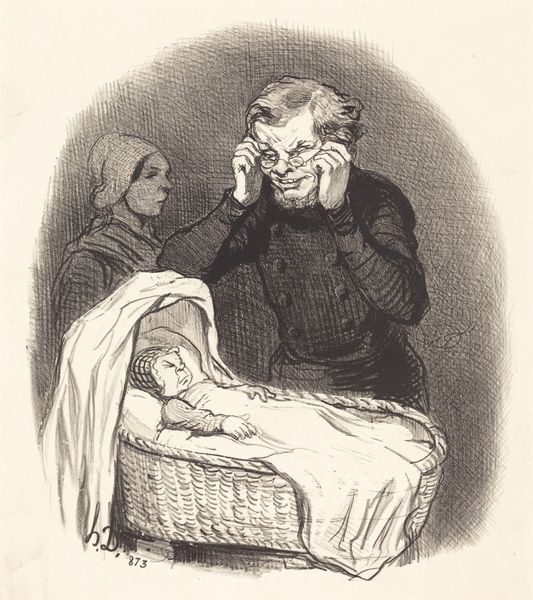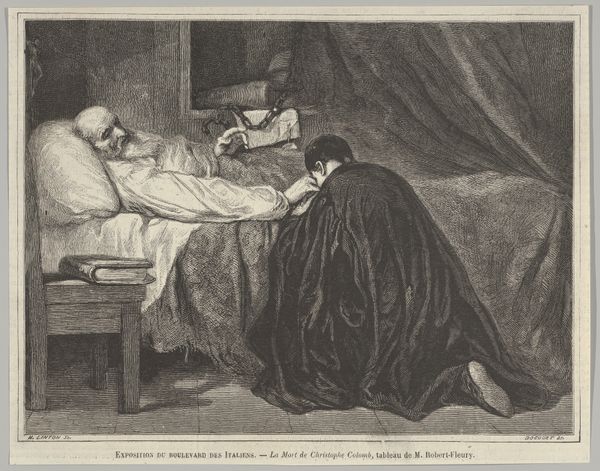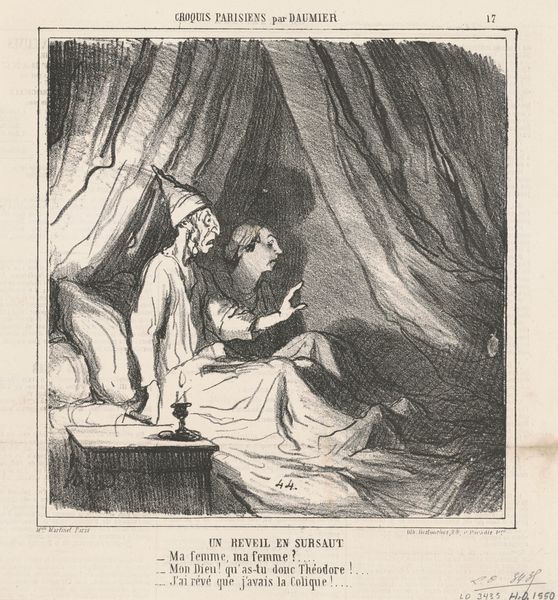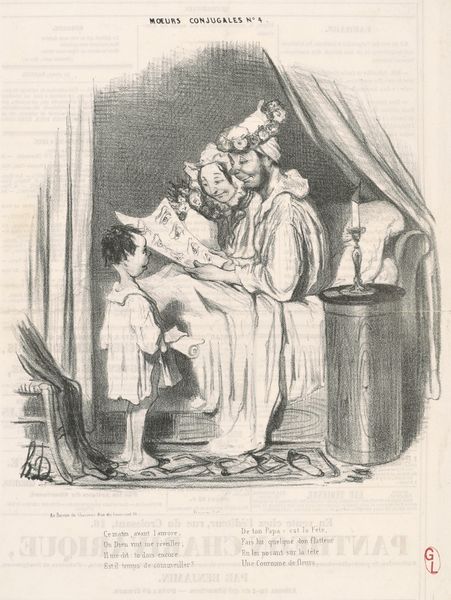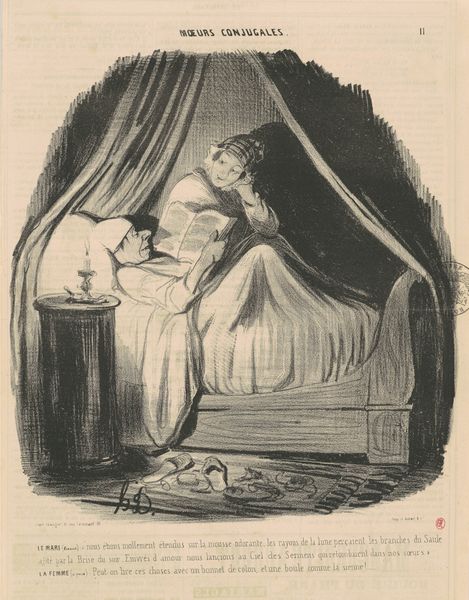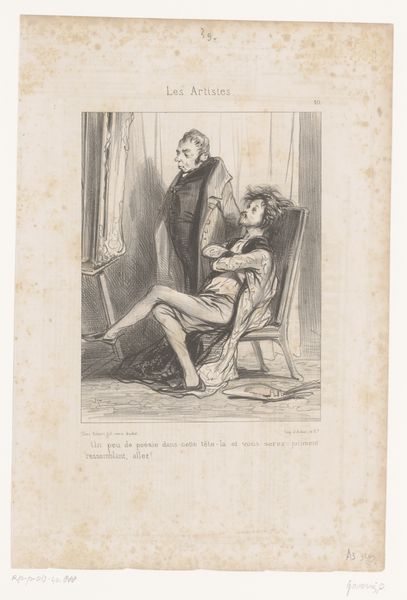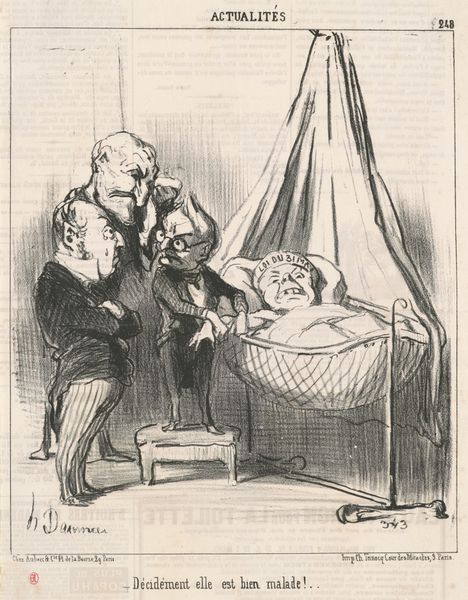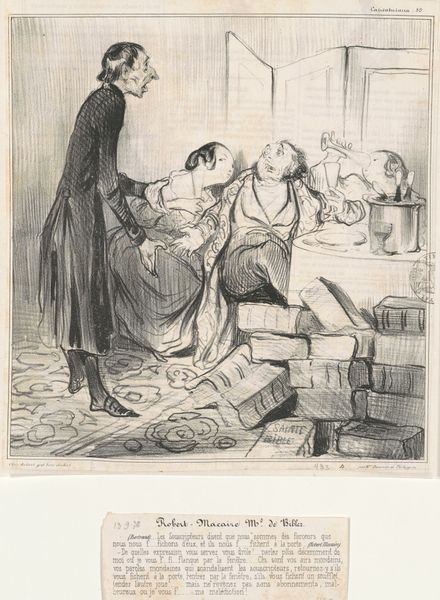
#
amateur sketch
#
toned paper
#
light pencil work
#
quirky sketch
# print
#
pencil sketch
#
sketch book
#
personal sketchbook
#
idea generation sketch
#
sketchbook drawing
#
sketchbook art
Copyright: National Gallery of Art: CC0 1.0
Editor: Here we have Honoré Daumier's 19th-century print, "M'sieu, c'est une lettre de trois sous..." in which a woman delivers a letter to a frightened man in bed. The texture achieved with the lithographic crayon is quite captivating. What stands out to you about the materials and process used here? Curator: It's essential to consider Daumier’s lithographic prints as products of a rapidly changing media landscape. How did this accessibility, the relatively inexpensive method of mass production using stone, influence his artistic choices and the way he communicated with the Parisian public? Daumier wasn't just creating images; he was participating in a visual culture of mass communication that democratized art, if you will. The lines here highlight the direct, unfiltered link with the labor and material processes of printing at the time. Editor: I see what you mean! It was designed for the masses, using a method available for replication at scale. Did this production impact the subject of Daumier's works? Curator: Absolutely. He leveraged this new medium to create commentary on social and political issues for popular consumption. Consider the satire: his subjects often lampooned the bourgeoisie or portrayed scenes from everyday life of working class Parisians. Can we consider these as different classes of artistic value and/or consumption? How did the cheap and readily accessible lithographs play a role in shaping and reinforcing social values of that era? Editor: That’s fascinating. The print becomes a reflection of production and consumption itself! I never really thought of printmaking in such socio-economic terms. Curator: Exactly! By looking at the labor involved, the materials used, and its dissemination, we begin to unpack its broader impact. What was it worth in material versus symbolic capital at the time of production, compared to now? Editor: Thinking about it as a product of industrialism, accessible to a wider audience with built-in social commentary adds new depth for me. Thank you.
Comments
No comments
Be the first to comment and join the conversation on the ultimate creative platform.
